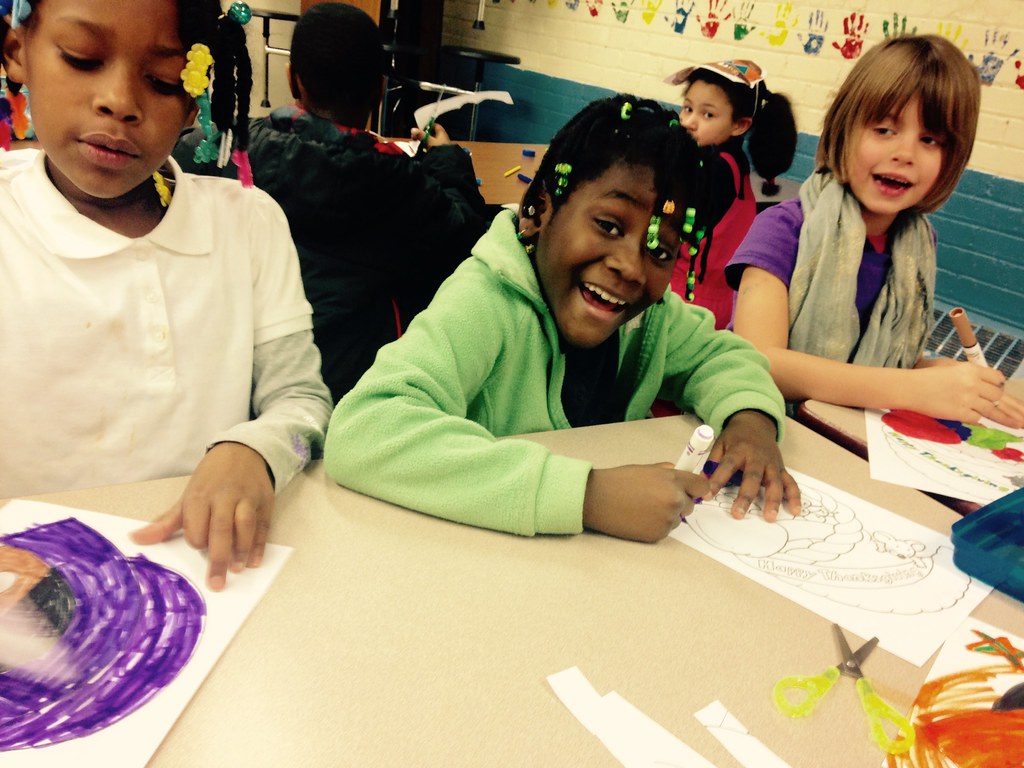Submitted by: Hannah Joseph, Nadim Khatib, Scot Seitz, Gabriel Kuperminc
Highlights
Setting high expectations for youth encourages a better relationship between adults and youth.
────
Staff teamwork and engagement build positive experiences with youth.
────
Afterschool programs are more effective when staff personally identify with youth they are serving.
Having positive experiences in after-school programs is associated with gains in academic performance, healthy behavior, and character development. Therefore, it’s important to understand how to improve youth’s experiences at after-school programs. This study identifies what characteristics of the Boys and Girls Clubs of America (BGCA) organization and workforce are associated with youth’s positive experiences. These include staff teamwork and efficiency, community engagement with families and schools, staff members who can personally relate to youth experiences, and positive interactions between staff and youth. Youth programs can use this information to inform workforce development efforts to train staff members in these practices and help promote positive experiences for youth after-school.
“Overall, this study provides evidence for the importance of workforce development initiatives that focus on improving staff–youth interactions, at least in part by increasing community engagement and staff teamwork and efficiency.”
This study uses survey data from youth members and staff at BGCA across the U.S. to assess what staff practices (e.g. establishing caring relationships, setting high expectations, positive behavior management, encouraging youth input and agency, cultural sensitivity) are related to youth members having better experiences in the Clubs (e.g., having fun, feeling a sense of belonging, experiencing emotional and physical safety, having adult caring relationships). Kuperminc et al. also considered how other Club characteristics (e.g., staff identifying with youth experiences, staff teamwork and efficiency, staff satisfaction, school and community engagement) are linked to staff practices with youth. Using such a large dataset (including surveys from 57,710 youth at 740 clubs across the country) allowed for evaluation of the impact of BGCA Club types on these relationships as well (e.g., Did the staff practices affect youth experiences differently in larger or smaller clubs?).
How Did a Community Psychology Perspective Inform Your Work?
Community psychology emphasizes the importance of the setting and context in understanding each person’s experience. This study looked beyond the individual child’s life to understand how structural aspects of BGCA Clubs influence the child’s experience.
This study was made possible through collaboration between a university evaluation team and the national research team at a nonprofit. Such partnerships are a strength of community psychology research.
Results
- When staff care about and set high expectations for youth, use positive behavior management techniques, are culturally sensitive, and solicit youth input, youth program participants are more likely to have a positive experience at the afterschool program.
- Positive staff practices are more common at BGCA Clubs where staff work together as an efficient team and where staff build connections with the young people’s schools and families.
- Youth tend to have more positive experiences at Clubs where more staff members personally identified with the experiences of the youth based on their own childhood background or knowledge of child development.
- Youth at Clubs that served fewer youth reported better overall program experiences. Staff at smaller Clubs tended to use more positive relational practices (e.g. setting high expectations for youth, cultural sensitivity).
- Youth at BGCA Clubs that serve lower income communities reported better program quality experiences, showing that high quality youth program can occur even in communities with fewer resources.
What Does This Mean For?
Research and Evaluation: This study demonstrates that integrating information about individual youth experiences with other data about their context can paint a clearer picture of best practices that yield positive experience for youth in afterschool programs. The use of a large dataset allowed the authors to study more complex relationships between an individual child’s experience (e.g. emotional safety) and Club staff practices (e.g. cultural sensitivity) and organizational structure (e.g. Club size). Finally, this study used survey measures of youth and staff experiences in Clubs, and the positive findings suggest that these measures can be used as indicators of program quality in after-school programs.
Practice: This study showed the importance of positive relationships between staff and youth to have a good experience in afterschool programs. Therefore, to promote better experiences for youth, after-school programs may wish to invest in staff training and professional development initiatives. This study suggests that staff teamwork and efficiency can help support positive relationships between staff and youth. A focus on staff competencies may not be enough to ensure such practices are maintained throughout the club. An emphasis on creating a positive and fulfilling work environment for staff is also important. Finally, developing strong connections with families and schools are positive steps that youth development organizations can take to improve youth’s experience and outcomes.
Social Action: This study illustrated the importance of community engagement to promote positive youth experiences at BGCA. These results suggest that promoting community connections between families, school and BGCA may lead to youth having more positive experiences in their after-school programs, which in turn is associated with gains in other positive youth outcomes.
Leadership and management teams at after-school programs: This research indicates that positive staff-youth interactions can be cultivated by promoting staff teamwork and efficiency and community engagement. Staff training initiatives may do well to focus on these areas. In addition, leadership and management teams at after-school programs can provide trainings that help staff members relate to the experiences of the youth that they serve.
Original Citation: Kuperminc, G. P., Seitz, S. , Joseph, H. , Khatib, N. , Wilson, C. , Collins, K. and Guessous, O. (2019), Enhancing Program Quality in a National Sample of After‐school Settings: The Role of Youth–Staff Interactions and Staff/Organizational Functioning. Am J Community Psychol. doi:10.1002/ajcp.12329



